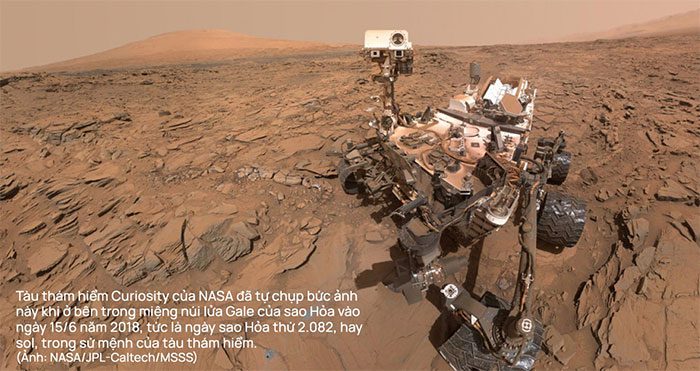Mars has reached its solar conjunction point as its orbit takes it to the far side of the Sun, obscuring it from view. NASA’s Mars rover will remain inactive until November 25.
Mars disappeared from the sky above Earth on November 18, when the Red Planet appeared to be swallowed by the Sun.


This disappearance may seem dramatic, but it is actually the result of Mars moving from the opposite side of the Sun toward Earth in an event astronomers refer to as solar conjunction.
According to In the Sky, Mars will be less than one degree from the Sun as it approaches. Both celestial bodies will be located in the constellation Libra. Following this, Mars will be unobservable for several weeks as it is washed out by the Sun’s bright light.
During solar conjunction, an event that Earth and Mars experience every two years, the two planets will also be at their farthest distance from each other. Mars and Earth are typically separated by an average distance of about 225 million kilometers. During solar conjunction, Earth and Mars will be about 235 million miles apart, more than two and a half times the average distance between Earth and the Sun.
The solar conjunction of Mars holds significant importance for skywatchers. For over twenty years, NASA has operated robots like the Curiosity and Perseverance rovers on the surface of Mars, as well as the Ingenuity helicopter exploring the barren and dry landscape of the Red Planet, along with spacecraft in orbit around it.
Loss of communication with Mars robots
During solar conjunction, mission controllers on Earth lose contact with the robotic missions on Mars. The rovers go inactive, Ingenuity lands, and spacecraft do not transmit data back to Earth. This is done to prevent the risk of commands being executed that could interfere with the operations of the robots or spacecraft.
“NASA will pause sending commands to its Mars fleet for two weeks, from November 11 to 25, while Earth and Mars are on opposite sides of the Sun. This phenomenon, known as Mars’ solar conjunction, occurs every two years,” NASA stated in a release.
Nasa added: “The missions are paused because the heat and ionized particles escaping from the Sun’s corona can disrupt radio signals sent from Earth to NASA’s Mars spacecraft, leading to unintended behaviors.”
Signals to Mars were halted on November 11 and will resume on November 25. The mission will continue to gather data on the surface conditions of Mars, weather, and the movement of sand on its surface.
Roy Gladden, manager of the Mars Relay Network, stated: “Our mission teams have spent months preparing a to-do list for all the spacecraft on Mars. We can still receive feedback from them and check their health status over the next few weeks.”
In the coming months, Mars will emerge from behind the Sun and will be visible for increasing durations in the pre-dawn sky. In about a year, Mars will be visible almost all night from Earth.


















































